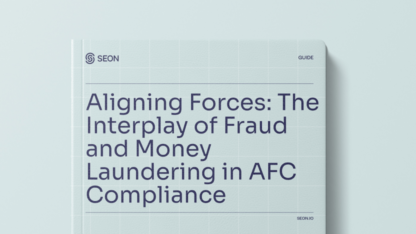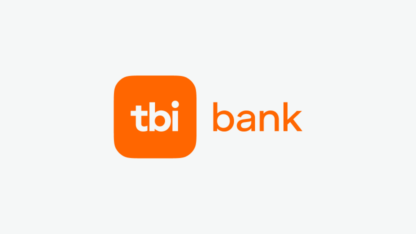Insurers are pretty familiar with fraudulent claims. But offering insurance online? That makes you even more of a target.
Let’s see what can be done to avoid insurance fraud.
What Is Insurance Fraud?
Insurance fraud includes any kind of deceitful activity related to the process of insuring an individual, asset or business. The fraudster may be the holder of the insurance policy, a person making a claim, or the insurance company itself.
Insurance fraud may be committed by opportunists, such as people who stumble upon a chance to make a false claim and get away with it. At the other end of the spectrum, you may find sophisticated organized fraudsters who operate like crime syndicates.
Online insurance fraud is increasingly popular thanks in part to the rise of insurance-as-a-service companies. Fraudsters can create multiple accounts and insure gadgets or electronics, then find ways to exploit their policies.
Hard vs Soft Insurance Fraud
A notable distinction is made in the world of insurance fraud between hard and soft crimes.
Hard insurance fraud occurs when an accident, theft or injury is planned and premeditated to exploit insurance companies.
Soft insurance fraud, on the other hand, happens when a legitimate claim is made but is exaggerated. For instance, a policyholder may legitimately state that their phone was stolen, but also add the cost of nonexistent accessories on their claim.
What Is the Impact of Insurance Fraud?
Insurance fraud is a serious issue and a punishable offense. Aside from legal repercussions for the fraudsters, it also impacts the general public at large. Some of these consequences include:
- Lower margins for insurance companies: An immediate downside of dealing with fraudsters is that it hurts insurance companies’ profits. Fighting fraud is expensive – not to mention the time and resources it requires.
- Higher premiums: Unfortunately, insurance companies tend to pass on the cost to customers. Fraudsters indirectly impact the prices of premiums. According to the UK’s Insurance Fraud Taskforce, this may cost policyholders up to £50 extra per year.
- Loss of public resources: It’s not just the insurance companies themselves who are overwhelmed by fraudsters’ attacks. Public resources, such as hospitals or healthcare facilities, for instance, may also have to expend valuable resources to verify or debunk claims made by fraudsters – especially in the context of car insurance or health insurance claims. The same aforementioned UK Taskforce report mentions that insurance fraud could be costing the UK economy more than £2/$2.60 billion per year, for example.
6 Types of Insurance Fraud
Insurance fraud is a broad topic. But here are key examples to look out for:
False or Exaggerated Claims
By far the biggest challenge for insurers is in verifying claims. However, this is baked into the process of providing insurance to the general public. Each insurance company has its own processes for checking claims and ensuring that only the right amount is paid back based on the cover’s policy.
Intentional Damage Claim
The second biggest challenge is to verify the cause of the claim. Insurers are well versed in the art of uncovering claims made after the policyholder intentionally damaged or lost an item.
This type of fraud is extremely common in the world of Insurance-as-a-service, or digital insurance. Fraudsters purchase a couple of identical items (such as the same model phone) and insure just one. They then damage the second and use it for their claim.
Car Insurance Fronting
A specific case of fake user registration happens in the world of car insurance. It is called “fronting”, and it happens when someone uses a more mature driver to get a more favorable insurance quote, though the insured vehicle is actually driven by someone else.
This type of fraud hinges on the way you can define a “main driver”. It is very hard to prove who drives a vehicle the most, which is why fronting is so prevalent in the car insurance world.

Crash for Cash Insurance Fraud
Another type of fraud specific to car insurance is crash for cash. Put simply. It’s a scheme that sees fraudsters engineer car crashes either through fake papers or real, planned collisions. There are three key scenarios:
- Staged accidents: Fraudsters crash their vehicle or deliberately damage their vehicle.
- Induced accidents: A fraudster forces an innocent driver to bump into their vehicle.
- Ghost accidents: The accident exists only through fabricated paperwork.
Ghost Brokers Scams
A ghost broker is essentially a fraudster pretending to be an insurance company. It is a scam that spreads on social media and targets vulnerable, less tech-savvy users. They may also be found offline, spreading through word-of-mouth or shady local businesses.

Fake User Registration and Multi Accounting for Gadget Insurance
As more insurance companies operate fully online, they become increasing targets for fraudsters.
Aside from the usual challenges of verifying claims, these companies must also answer the question, “Am I dealing with a real person or not?”
If the answer is no, you are probably dealing with a multi-accounting fraudster. It is increasingly easy to create dozens of online accounts by using stolen IDs. Fraudsters just find batches of stolen or leaked IDs and use them to register to online insurance accounts and make claims.
This is how it works:
- A fraudster creates multiple accounts with a gadget insurer using stolen IDs.
- They insure several devices.
- They damage or “lose” the device on purpose, and make a claim.
- They pocket the insurance money, wipe the device, and sell it back.
The fraudster will use a variety of faked documents and pictures to submit their claim. While it’s hard to prove that damage is voluntary, what is much easier to establish is that they used a fake identity to register, as we’ll see below.
How to Prevent Online Insurance Fraud
Online insurance fraud prevention starts by checking two key points:
- Is the online user really who they say they are?
- Are they using a legitimate form of payment?
The latter can be broken down into two subcategories: stolen credit cards and high-risk payment methods, such as prepaid cards.
Let’s see how you can detect the right data points to answer these two questions.
Use Device Fingerprinting and IP Analysis to Spot Connections Between Accounts
Bad customers of your insurance companies are likely to hide their identities. They are also likely to open multiple accounts to put the odds in their favor. This is called multi accounting and a good way to stop this kind of fraud is to identify similarities between accounts.
In the world of fraud prevention, this is checked by looking at device and IP data. The chances are that fraudsters don’t have the time or resources to use a new device and connection type every time they access your site.
Here are examples of data points that could point to multi accounting or suspicious device and IP data:
- Multiple users share very similar configurations of software and hardware. This is unlikely to happen with legitimate users, as there can be many variants, such as browser plugins installed, size of the HTML canvas, etc…
- Users share IP data that points to data centers, VPNs, or suspicious proxy connections.
- Users are hiding their configurations behind spoofing tools such as anti-fingerprinting browsers or emulators.
Perform a BIN Lookup to Verify Card Details
A BIN lookup will give you more information about the payment method used to purchase the insurance policy. While it’s not enough to stop fraudsters in and of itself, it’s a great way to flag high-risk users.
- Is the card prepaid? These types of payment methods tend to carry more risk as they can be funded with limited KYC checks.
- Does the issuing bank country match your user records? It is a form of due diligence you can easily perform to ensure you’re not dealing with bad agents.
Some of these details can be checked at the signup or payment stage. You can automatically block a payment, or at least get it reviewed manually to determine how risky a policyholder will be for your insurance business.
You can try SEON’s BIN lookup below. Just enter the first six digits of a card number.
Free BIN lookup!
Enter the first 6 or 8 digits of a card number (BIN/IIN)
Text here
Leverage Data Enrichment to Ensure You’re Dealing with Real People
Last but not least, you need ways to know if you’re dealing with legitimate people. In the online world, there are a few ways to go about it. You could ask for IDs, which is time-consuming, adds friction to the customer journey, and also an easy check to bypass.
A better solution? Looking at alternative data enrichment. The idea is to leverage fewer data points (which you will already have) and to derive as much information as possible from them.
For instance, with an email address, you could find out:
- If the customer has registered on social media networks. A lack of social profiles should increase risk.
- If the customer used a free email provider. This should also increase risk.
- If the email address name looks suspicious. A combination of letters and numbers that seem randomly generated could be bad news – for instance, [email protected] is more suspicious than [email protected]
- and much more
The more information you can score, the more you can get an idea of how risky it is to accept a new customer. Note that you can also perform data enrichment based on a phone number or IP address for more precise results.
How SEON Does Online Insurance Fraud Protection
At SEON, we specialize in helping companies know who their online users are. We allow your insurance company to deploy powerful data enrichment, with zero extra friction for your users.
It’s the fastest way to gauge how risky it is to accept a new policy, so you can filter out obvious fraudsters as soon as they start registering on your site.
Best of all, you can deploy this extra layer of risk protection fast, in a variety of ways, and with a completely free 30-day trial.
Partner with SEON to reduce fraud rates in your business with real time data enrichment and advanced APIs
Ask an Expert
Insurance Fraud FAQ
Insurance fraud is a broad topic, which tends to be divided into two main types. Hard insurance fraud includes premeditated fraud. Soft insurance fraud includes exaggerated claims. Both are illegal.
Insurance fraud is legal and a punishable offense. You may be prosecuted and charged with a crime.
Insurance companies have their own methods to investigate fraud. However, online companies can also focus on catching fraudsters before they take out policies with them. This is a form of identity verification that filters out fake users and synthetic IDs.
Sources:
- UK Insurance Fraud Taskforce: final report








